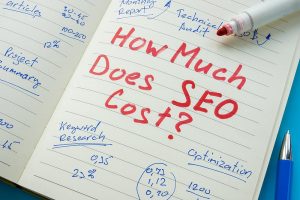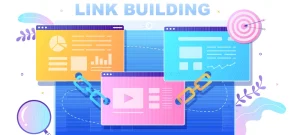What is Paid Search (PPC)?
Paid search marketing can be referred to by many names in the advertising and marketing sector, including acronyms.
Search engine marketing (SEM) encompasses SEO, pay-per-click (PPC), search engine advertising and sponsored listings. Before diving into specific advertising programs and ad types such as Google Ads (formerly AdWords), Product Listing Ads and Shopping Ads from Google, consider these basics:
Don’t fret: Econsultancy can help you make sense of it all. This article will give an overview of paid search and define its components, as well as describe the various ad types and abbreviations you might come across, plus discuss both its advantages and drawbacks.
This guide is meant for beginners only. If you are an expert in Google ads account, this may not be the right guide for you. But please share any tips and advice in the comments!
E-consultancy’s Paid Search Best Practices Guide states:
Paid search marketing enables businesses to advertise in sponsored listings of search engines or partner sites. Businesses can pay either per click (pay per click), per display (CPM – cost per thousand), or whenever a phone call is made (pay per call).
The guide author also emphasizes that pay-per-click (or paid search) are not interchangeable terms. Paid search marketing may include other payment models like CPM (cost per mile or cost per thousand impressions), or CPA (cost-per-action / acquisition).
PPC (pay-per-click) remains the most popular form of paid search. Although these terms are often interchangeable, this guide will focus on pay-per-click and point out where other types of paid search ads differ from those.
What does it look like when you come across PPC results in the real world?
Google returns the following results when a user searches for “chocolate fountain” on Google:
This screenshot illustrates that sponsored search results are presented in a carousel at the top. These ads, known as Product Listing Ads (also known as Google Shopping ads), appear when someone searches Google for an item.
Laser clinic has the highest Ad Rank for the search term “Laser Hair Removal,” appearing at the top of the results box. Although it costs more to click on their service than other companies, users will still visit their website. Ad rank isn’t determined by bid price alone – Google AdRank takes into account factors like ad quality and any ad extensions used as well as the context of your search.
What does a Google ad look like when it comes to an inactive search? Here is one example of what this could look like for a “paid SEO expert“, which as you can see is highly sought-after:
Instead of a carousel with product images, we are presented with regular text ads which look just like search listings. They are only distinguishable by an “Ad” label to the right of the URL.
When we enter Bing, it looks much the same on both counts. A visual carousel displays Bing Product Ads – part of their Shopping service – while text-based advertisements display non-product searches.
Bing has added additional text advertising space beneath the product carousel, in addition to Google’s local maps ads.
Bing only displays one paid search result for “paid SEO expert”, while Google displays four. Could all PPC experts be advertising on Google?
A Glossary of Abbreviations
We’ve already discussed some common three-letter abbreviations used in paid search, but here is a comprehensive list.
CPC
Cost per click also referred to as CPC, is the amount paid by advertisers on a SERP for each click on their ad. It’s similar to pay-per-click (PPC), though some people refer specifically to Cost Per Click when measuring cost-per-click rather than PPC which refers to an entire strategy.
CPM
CPM stands for Cost Per Thousand Impressions. This advertising model differs from CPC in that it rewards companies based on how many people see the ad (known as “impressions”), not how many click on it. Therefore, CPM works best for companies seeking to increase brand awareness rather than generate direct sales.
PLA – Google Shopping Ads
Display ads for product listings. Also referred to as Google Shopping Ads.
Google Shopping Ads, also referred to as Product Listing Ads (PLAs), are online advertisements that enable retailers to display their products directly in Google search results and on the Google Shopping platform. These ads typically include an image of the item, its price point, and who made it. They’re designed to give users relevant and visually pleasing search results so it’s simpler for them to find and compare items.
Google Shopping Ads are distinct from traditional text ads in several ways:
Visual Presentation: Shopping ads often include product images, making them more visually appealing and informative compared to text ads.
Product Details: In addition to the image, Shopping ads display the product price and merchant name, giving users more details about a particular item before they click on the ad.
Ad Format: Shopping ads are typically displayed in a carousel format within search results or on the Google Shopping platform, enabling users to quickly scroll through multiple products.
Targeting: Shopping ads utilize product data from a retailer’s Google Merchant Center account to determine when and where ads should appear.
Google Shopping Ads work by using product data from a retailer’s Google Merchant Center account to create ads that appear in search results and on the Google Shopping platform. To set up this type of ad, retailers need to set up an extensive product feed with detailed info about each item such as titles, descriptions, images, prices, and other pertinent attributes.
Google Shopping Ads requires retailers to create a campaign in Google Ads and set an appropriate budget and bid strategy. Google uses several factors, such as the retailer’s bid, product data quality and relevance, and user-inputted search queries, to decide when and where ads appear.
Google Shopping Ads offer several advantages, such as:
Increased Visibility: Shopping ads can make your products stand out in search results with their visually appealing format, potentially increasing clicks and conversions.
Improved Qualified Leads: Users can view product images, prices and other details before clicking the ad, creating more informed and interested visitors to your website.
Easier Management: Shopping ads utilize product data from your Google Merchant Center account, making it simpler to monitor and update your ads as inventory changes.
Optimized Targeting: Google uses your product data to match your ads with pertinent search queries, helping you reach potential customers who are actively looking for products like yours.
PPC – Pay Per Click
Pay Per Click (or PPC) is the most widely used paid search model and often refers to all paid search initiatives. It works similarly to Cost Per Click (CPC), where advertisers pay search engines for each click on their ads.
Pay-Per-Click (PPC) is a digital advertising model in which advertisers pay a fee each time their ad is clicked by a user. PPC is often utilized in search engine marketing (SEM) to drive targeted traffic to websites. Advertisers bid on specific keywords related to their business, and their ads appear in the sponsored section of SERPs when users search those terms.
PPC works through an auction system, where advertisers bid on keywords related to their products or services. When a user searches for that keyword, the search engine determines which ads to display based on factors like the advertiser’s bid, the relevance of the ad and quality. The advertiser is then charged a fee when someone clicks on their ad which takes them directly to their website or landing page.
Some advantages to consider when using PPC advertising include:
Immediate Visibility: PPC ads offer your business instant visibility, helping you connect with potential customers who are actively searching for what you have to offer.
Targeted Traffic: Pay-per-click advertising (PPC) offers you the power to target specific keywords, locations and demographics so your ads are shown only to relevant audiences.
Cost Control: Create a budget and monitor your spending on either a daily or monthly basis to ensure you don’t go overboard with advertising expenses.
Measurable Results: PPC platforms offer comprehensive analytics and reporting, enabling you to monitor the performance of your ads and optimize them for improved outcomes.
Popular pay-per-click platforms include:
Google Ads (Formerly known as Google AdWords): The most widely utilized PPC platform, Google Ads enables you to create and manage ads that appear in both search results and on Display Network sites.
Bing Ads: Bing’s paid search platform allows you to create and manage ads that appear in Bing and Yahoo search results.
Facebook Ads: Facebook’s advertising platform provides pay-per-click (PPC) options for ads displayed across its various platforms including Facebook, Instagram, and more.
LinkedIn Ads: LinkedIn’s advertising platform provides Pay-Per-Click (PPC) options for ads displayed on professional networking sites.
SEM – Search Engine Marketing
Search Engine Marketing, commonly referred to as Search Marketing is an umbrella term. While it’s most often associated with paid search advertising, the term can also apply to SEO (Search Engine Optimization).
Search Engine Marketing (SEM) is a digital marketing strategy used to boost a website’s visibility on SERPs through paid advertising. SEM involves bidding on specific keywords and phrases related to a business’ products or services with the aim of displaying ads when users search for those terms. The most popular platform for SEM (Search Engine Marketing) is Google Ads (formerly known as Google AdWords), but other platforms like Bing Ads and Yahoo Ads may also be utilized.
Both SEM (Search Engine Marketing) and SEO aim to increase a website’s visibility on search engines, but their approaches differ. SEO involves optimizing a site in order to rank higher organically (non-paid) through various on-page and off-page techniques; on the other hand, SEM (Search Engine Marketing) involves paid advertising that appears in sponsored sections of search engine result pages. Both strategies can be combined for an integrated digital marketing approach.
Negative Keywords
Negative keywords in Pay-Per-Click advertising (PPC) refer to terms or phrases advertisers use to prevent their ads from being triggered by irrelevant or unwanted searches. By adding negative keywords to a campaign or ad group, advertisers can exclude their ads from appearing when users search for those specific words and phrases. This improves relevance of ads, reduces wasteful ad spend, and maximizes overall efficiency of PPC campaigns.
Google Ads Keyword Planner
Google Ads Keyword Planner is a free service provided by Google to assist advertisers in researching and identifying keywords for their pay-per-click (PPC) campaigns. It provides insights into keyword trends, search volume, competition levels, and estimated costs per click (CPC), so advertisers can make educated decisions about which words should be targeted in their campaigns.
The key components of SEM (Search Engine Marketing) include:
Keyword Research: Determining relevant keywords and phrases that potential customers use when looking for products or services similar to yours.
Ad Creation: Crafting effective ad copy in various formats, such as text ads, display ads or shopping ads.
Campaign Setup: Configuring your ad campaigns settings, such as targeting options, bid strategy and daily budgets.
Ad Monitoring & Optimization: Monitoring ad performance over time by adjusting bids and fine-tuning copy to improve click-through rates (CTR), conversions and return on investment (ROI).
Pay-Per-Click (PPC) is a pricing model used in Search Engine Marketing (SEM), where advertisers pay a fee each time their ad is clicked by a user. This enables businesses to purchase targeted traffic instead of earning organic visits through SEO. The cost per click (CPC) varies based on factors like keyword competition, ad quality and the platform being utilized.
Google Ads
Previously known as Google AdWords until July 2018, Google Ads is their advertising network. It offers PPC/CPC/CPM and CPM advertising, in addition to the site-targeted banner, text, and rich media ads.
Google Ads allows you to display your ads across either or both of Google’s advertising networks.
Google Search Network – Includes ads appearing on search results pages from services like Google Search, Shopping and Maps as well as any search partners.
The Google Display Network comprises websites affiliated with Google and other Google sites like YouTube or Gmail.
Google Ads allows you to set your bid (the amount paid per click) manually or automatically. Manual settings enable you to set specific amounts while automatic selection will choose one within your budget that meets all of your needs. You have the option of setting either CPC or CPM maximum bid amounts as well.
What are the drawbacks of Google Ads?
Google is constantly improving their products, meaning any issues or oversights will likely be resolved in time – even if it has been several years.
Google launched Enhanced Campaigns in 2013, which enabled advertisers to target customers based on time, place, and device. With this change, advertisers were no longer able to separate tablet users from desktop and mobile users.
Google noted that users were transitioning from their desktop PCs to tablets because the two types of devices shared such a similar behaviour, they could classify both types under one category. Therefore, both types of users were treated equally.
Google Ads users were outraged and, in 2016, Google announced an expansion of its control over device-level bidding through Enhanced Campaigns – including tablet bidding.
Google’s audience targeting is less refined than that offered by Facebook advertising. You can target by gender, age, location and device type; however, the level of precision offered by Google doesn’t quite measure up to that of Facebook.
Search advertising is distinct from Facebook’s social media advertising, so the results you see on both platforms will differ. Google Ads cannot replicate the highly targeted targeting offered by Facebook Ads.
Five Expert Strategies to Maximize PPC Campaign Performance
The Bing Network, formerly the Yahoo Bing Network.
Google Ads is closely connected to Microsoft-owned Bing, its largest search rival. Formerly known as Yahoo Bing Network, this network included advertising on Yahoo Search as well as syndicated partners like Monster, Amazon and Facebook.
In 2016, Microsoft and Yahoo renegotiated their 10-year search agreement, returning control of ad sales, account management, and other aspects to the companies where it had previously been shared. Bing then unveiled The Bing Network: an expanded network featuring syndicated partners such as AOL, Infospace, the Wall Street Journal, and Gumtree.
According to Bing Ads’ statistics at present, Bing Network holds a 24.7% market share in the UK with 960 million monthly searches. It also holds a 33.9% share in America with 136 million unique searches and 6 billion monthly searches; furthermore, its 16.5% market share with Canada comes from its 403 million monthly searches that translate into an impressive 16.5% share; furthermore, this dominance can also be seen across Europe where Bing holds significant shares such as France (18.5%) and Norway (17.1%).
Google Ads may have a wider reach than other search engines, but there are still benefits to purchasing ads on less well-known search engines like Bing. These include lower competition and fewer clicks. As you can see from the screenshot, your company may not always have an ad spot available; this gives you control over which sponsored results appear for searches.
WordStream data suggests that click-through rates might be higher with Bing Ads than Google Ads, particularly for Expanded Text Ads. On average, CTRs across all industries for Bing Ads are 2.83% versus 1.91% respectively.
On Bing, you can reach an important audience that isn’t on Google. Consider running additional ads on Bing to monitor their performance and potential ROI.
Why Use Paid Ads?
The primary advantage of paid searches is your company’s visibility at the top of search engine results pages. Paid campaigns can guarantee your ranking on these pages, making mobile devices even more challenging as sponsored results take up more screen real estate than usual.
Multiple surveys have demonstrated that searchers often struggle to distinguish between organic and paid results. Ofcom data for 2016 revealed 49% of adults could identify sponsored search results as advertisements, suggesting they won’t trust paid outcomes more than organic ones.
PPC advertising can be the fastest route to success if you have the right investment. If you are familiar with the platform, creating a PPC campaign takes less than an hour and ensures your ads appear in sponsored results.
Search marketing makes it much simpler to monitor your customers. Paid search allows you to monitor every ad, keyword and dollar spent with greater precision; thus giving your business an improved return on investment (ROI). Advertisers will also appreciate having greater control over their campaigns through search marketing.
Paid search is an integral component of any marketing plan. It grants access to search engines’ affiliate networks websites and products as well as the capacity to target specific locations with ads.
Alternatives to Paid Advertising
Paid advertising can be an effective way to reach your desired audience, but there are also several other marketing tactics you can utilize to promote your business, products or services. These alternatives help build brand awareness, engage potential customers and drive organic traffic to your website without incurring the costs associated with paid ads.
Search Engine Optimization (SEO): SEO seeks to optimize your website so it ranks higher in SERPs organically. This involves creating high-quality content, optimizing on-page elements, and building an impressive backlink profile. By increasing your website’s search visibility, you can attract more organic visitors and potential customers.
Content Marketing: Content marketing is the practice of creating and sharing valuable, informative, and engaging content to attract and keep a target audience. This could include blog posts, articles, videos, infographics, podcasts or other forms of media. By consistently producing high-quality work you will establish yourself as an industry authority and build trust with potential customers.
Social Media Marketing: Social media marketing involves using platforms such as Facebook, Instagram, Twitter, LinkedIn and Pinterest to connect with your target audience, share content and promote your brand. By cultivating a robust online presence you can increase brand recognition, drive website traffic and build customer loyalty.
Email Marketing: Email marketing is the practice of sending tailored, personalized emails to your subscribers in order to promote products or services, share news, and offer valuable content. By running a consistent email campaign, you can nurture leads, boost customer retention rates, and encourage repeat business from existing customers.
Influencer Marketing: Influencer marketing involves teaming up with individuals who have a large online following to promote your products or services. By tapping into this audience, you can increase brand awareness and reach potential customers who may not have encountered traditional advertising before.
Public Relations (PR): PR is responsible for managing your brand’s reputation and image through media coverage, press releases, and other public-facing communication. By cultivating strong relationships with media outlets and journalists, you can secure valuable coverage that puts your company in a positive light.
Referral Marketing: Referral marketing encourages existing customers to spread the news about your products or services to their friends, family, and professional networks. By offering incentives such as discounts, exclusive offers, or free products to satisfied clients, you can turn them into brand ambassadors who help promote your business.
Community Building and Networking: Connecting with industry-related communities and attending networking events can help you form relationships with potential customers, partners, and industry influencers. By actively participating in relevant forums, social media groups, and industry events you will position your brand as an invaluable contributor to the community and create new business opportunities.
Each of these alternatives to paid advertising offers its own distinct advantages and can be tailored to fit within your marketing goals and budget. By integrating a combination of these strategies into your plan, you will effectively reach your target audience, raise brand awareness, and encourage sustainable growth for your business.






